

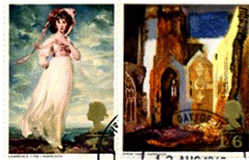
 |

|
 |
| 1516 Henry
VII established the 'Master of the Posts' which was later to become the
office of 'Postmaster General' 1635 Charles I made the postal service available to the general public on 31st July. The cost of the delivery was paid by the recipient. 1654 Oliver Cromwell granted a monopoly on mail delivery in England to the 'Office of Postage'. 1657 Fixed postal rates were introduced. 1660 Charles II established the General Post Office. 1661 The first 'Postmaster General' was appointed and a postage date stamp (post mark) was first used. 1784 The first mail coach was introduced which ran between Bristol and London. 1793 Postmen in uniforms were seen for the first time. 1830 The first mail train deliveries were made, running from Liverpool to Manchester. 1837 The adhesive postage stamp was invented by Rowland Hill, for which he was knighted. 1838 The Post Office money order system was introduced. 1840 The 'penny black', the first adhesive postage stamp, was introduced and the uniform 'penny post' was established. 1852 The first Post Office pillar box was erected in Jersey, in the Channel Islands. 1853 The first post boxes were erected in mainland Britain at Botchergate, Carlisle. 1857 The first wall post boxes were installed at Market Drayton and Shrewsbury. 1863 The first trials were made by the London Pneumatic Despatch Company, sending mail by underground rail between postal depots. 1870 The Post Office launched its telegraph service. In the same year, the Post Office Act banned the sending of 'indecent or obscene' items. 1870 The first postcards were introduced with the ½d postal rate and provision was made for the issue of newspaper wrappers. 1880 Postmen started to deliver mail on bicycles. 1881 The postal order was introduced. 1883 The parcel post service began. 1912 The Post Office opened the national telephone service. |
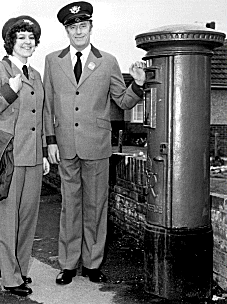 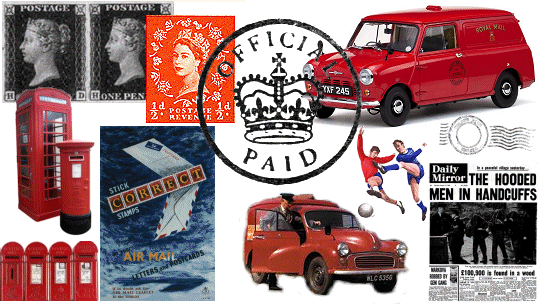 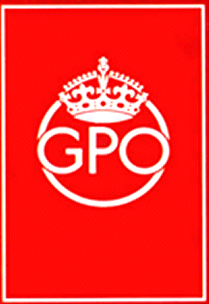 |
Post Office Savings and Postal
Orders
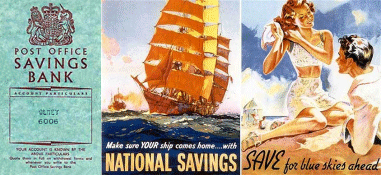 |
The number of post-war Crown post
offices peaked at just over 1,800 in the middle of the Sixties and had been
reduced to fewer than 400 by 2011. The UK was the first country to operate
a postal savings system, in 1861, to provide for poorer depositors who did
not have access to banks which catered for wealthy customers. The system was championed by Sir Rowland Hill, and Chancellor of the Exchequer William Ewart Gladstone viewed it as a way of financing the public debt. The original scheme was limited to deposits of £30 a year and a maximum balance of £150, with interest being paid at the rate of two and a half percent per year on whole pounds. This was later raised to a maximum annual deposit of £500 with no limit on the total. Within five years there were more than 600,000 accounts and £8 million on deposit. By 1927 this had grown to twelve million accounts with £283 million on deposit. Initially the UK system offered only savings accounts, but in 1880 it also started to sell government bonds and, in 1916, introduced war savings certificates. These were renamed National Savings Certificates in 1920. The lottery bond, or 'Premium Bond' was launched in 1956 and soon became its most popular savings certificate. The Post Office Savings Bank became The National Savings Bank in 1969, later being renamed National Savings and Investments. While still continuing to offer National Savings services, the General Post Office also created the National Giro in 1968, later privatised as Girobank and acquired by the Alliance & Leicester in 1989. |
| An engraver called Arthur Bull
queued up for three hours in 1881 to purchase the first postal order, serial
number 000001, for one shilling. The original was later sold at auction
for almost £4,500. Only five other 1881 postal orders bearing the same 000001
number are known to have survived but this was the first one ever produced
by the main Lombard Street post office. Ten post offices were issued with
books starting with the number 000001 in 1881, but only half of these have
currently been identified as still being in existence. Postal orders were invented in the Victorian era as a safe and secure method of sending money through the post. The first ones contained the watermark 'Postal order / One shilling' as a device to combat potential forgery. The postal order measured 21cm (8.5in) by 9cm (3.5in), smaller than modern versions, and was not issued with any counterfoil or stub for the teller to retain as a transaction record. The postal order idea was formalised from a money order that had already been established by a private company in 1792 and was created as a means of allowing 'poor' people to buy goods via mail without a bank account. During both world wars they were used as a substitute for cash to save both paper and labour. |
The Post Office Railway Services
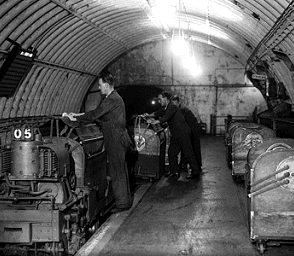 |
The Underground Railway By the start of the 20th century, traffic conditions and London smog meant that mail being carried between railway stations and the main Post Offices was increasingly delayed. Previously, trials had been carried out by the London Pneumatic Despatch Company in 1863, sending mail by underground rail between postal depots but, in 1909 a committee was formed to study the possible use of underground railways and, in February 1911, it recommended the construction of an electric railway using driverless trains. This was accepted and in 1913 the Post Office (London) Railway Bill was passed as an Act of Parliament. The proposed underground railway was to be about 6.5 miles in length at an average depth of 70ft, connecting East and West London, and with eight stations which were to be situated at Paddington District Office, Western Parcels, Western D.O., Western Central D.O., Mount Pleasant, King Edward Building, Eastern D.O. and Liverpool Street. Construction began in 1914 (a short experimental track with one car was also erected on Plumstead Marshes). Tunneling work was completed in 1917 but, due to war costs, the Treasury would not allow the ordering or installation of operating equipment. Not only that, but the high price of post-war materials delayed further work on the railway until 1923. It was finally opened on 5th December 1927 with parcels transported between Mount Pleasant and Paddington. Mount Pleasant to Liverpool Street opened for Christmas parcels from 19th December, moving to a full service on 28th December. Liverpool Street to the Eastern D.O. opened for parcels on 2nd January 1928 and letter transportation commenced on 13th February when the West Central D.O. opened, followed by the Western D.O. on 12th March. The trains ran in a 9ft diameter tunnel containing a double 2ft gauge track. The trains were much smaller than their passenger counterparts but the stations were much the same. During the First World War the tunnels were used to store art treasures from the Tate and National Portrait galleries. The original rolling stock consisted of 90 trains, but these had to be replaced within three years due to excessive wear. The new trains were 27ft long single cars each able to carry four mail bag containers that held about 15 bags of letters or six of parcels. Further replacements were trialed in the Sixties with a new fleet being introduced in 1980. The Western Parcels and Western D.O. stations were closed in 1965 to be replaced by a station at the new Western D.O. in Rathbone Place, opened on a new section of track on 3rd August 1965. On its 60th anniversary in 1987, the name of the service was changed to 'Mail Rail' with some of the trains being rebuilt with streamlined body work. The underground railway that ran from Paddington to the Whitechapel Office (pictured) closed in 2003. At its zenith 30,000 mailbags, containing some 4 million letters, would be transported 6.5 miles in around 26 minutes. |
| Rail parcels (as opposed to parcels
carried on behalf of the GPO) were a specialised high value category of
traffic, the volume of which was sufficient for it to warrant being carried
separately from the main railway goods traffic either in guarded compartments
of passenger trains or in special parcel trains. Rail companies operated
dedicated fleets of vans to transport parcels between main stations while,
at smaller local stations the customer usually had to deliver to, or collect
from, the station themselves. These trains were a regular feature of rail
traffic from about 1900. The Post Office was not originally allowed to handle parcels and the rail companies were against allowing them to do so but The Post Office Parcels Act of 1882 allowed the GPO to enter this area of the business and they were offering a parcels service from 1883. Post Office parcels very soon became a major user of the railways for transporting long distance parcels but the two services were not combined and separate rail company parcel trains continued to be used. An overnight delivery service operating between London and Glasgow started in 1967. From the late 1950's purpose-built parcel railcars were built, called DPUs. Rail parcels were booked in from an office at the passenger station and restricted in both size and weight, so not just anything could be sent. Any oversize or heavy items would only be dealt with at a goods yard. At branch line stations the parcels were loaded and unloaded from the guards compartment at the passenger platform. In urban stations there was often a platform dedicated to handling parcels. Major city stations often operated a dedicated parcel depot with longer platforms to allow access to the vans. Originally, four-wheeled trolleys were used to move mail bags and parcels around the platforms but they were really designed for luggage therefore, in the mid-Sixties, British Railways developed low floor wire cage trolleys known as BRUTE (British Railways Utility Trolley Equipment) to replace them. |
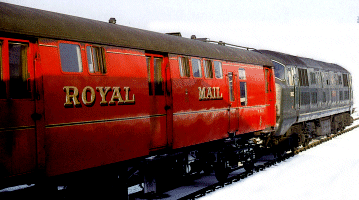 |
| The number of Inland letters (not
parcels) sent via Royal Mail per year: |
The number of Airmail letters (not parcels) sent via Royal Mail per year: | ||||||
| 1956-57 9,700,000,000 1957-58 9,600,000,000 1958-59 9,700,000,000 1959-60 10,200,000,000 |
1960-61 10,600,000,000 1961-62 10,600,000,000 1962-63 10,600,000,000 1963-64 11,000,000,000 |
1964-65 11,200,000,000 1965-66 11,300,000,000 1966-67 11,400,000,000 1967-68 11,500,000,000 |
1968-69 11,300,000,000 1969-70 11,400,000,000 1970-71 10,500,000,000 1971-72 10,550,000,000 |
1956-57 271,000,000 1957-58 258,000,000 1958-59 238,000,000 1959-60 248,000,000 |
1960-61 275,000,000 1961-62 281,000,000 1962-63 282,000,000 1963-64 296,000,000 |
1964-65 308,000,000 1965-66 328,000,000 1966-67 336,000,000 1967-68 352,000,000 |
1968-69 371,000,000 1969-70 389,000,000 1970-71 361,000,000 1971-72 418,000,000 |
| Letters | Parcels (3ft 6 ins greatest length; length and girth combined 6ft) | ||||||||||||
|
1st May
1952 |
1st Oct
1957 |
17th May
1965 |
3rd Oct
1966 |
|
1st Oct
1961 |
29th Apr
1963 |
17th May
1965 |
3rd Oct
1966 |
16th Sep
1968 |
Decimal
6th Mar 1972 |
|||
| Weight Division |
Ordinary Rate
|
Ordinary
Rate
|
Ordinary Rate
|
Ordinary Rate
|
Weight Division
|
Ordinary
|
Ordinary
|
Ordinary
|
Ordinary
|
Ordinary
|
Local
|
Ordinary
|
Local
|
| Up to 1oz |
3d
|
Up to 1 1/2lb
|
2s 6d
|
2s 6d
|
1s 6d
|
16p
|
11p
|
||||||
| Up to 2oz |
2 1/2d
|
4 1/2d
|
4d
|
4d
|
1 1/2lb to 2lb
|
3s 0d
|
3s 0d
|
2s 0d
|
21p
|
16p
|
|||
| 2oz - 4oz |
3d
|
6d
|
Up
to 2lb
|
2s
0d
|
2s
0d
|
2s
9d
|
|||||||
| For each additional 2oz |
1d
|
1 1/2d
|
2lb
to 4lb
|
25p
|
20p
|
||||||||
| For each additional 2oz up to 1lb |
2d
|
2d
|
2lb
to 6lb
|
4s
6d
|
4s
6d
|
3s
6d
|
|||||||
| For each additional 2oz after 1lb |
3d
|
2lb
to 3lb
|
2s
3d
|
2s
3d
|
3s
0d
|
||||||||
|
For each additional 2oz up to 1lb 8oz |
3d
|
3lb
to 4lb
|
2s
6d
|
2s
6d
|
3s
3d
|
||||||||
| Over 1lb 8oz up to 2lb |
3s
6d
|
4lb
to 5lb
|
2s
9d
|
2s
9d
|
|||||||||
| Each additional 1lb |
2s
0d
|
4lb
to 6lb
|
3s
6d
|
29p
|
24p
|
||||||||
| Two-Tier Post introduced in 1968 |
Sep
16th 1968
|
Decimal**
- Feb 15th 1971
|
5lb
to 6lb
|
3s
0d
|
3s
0d
|
||||||||
|
First
Class
|
Second
Class*
|
First
Class
|
Second
Class
|
6lb
to 10lb
|
6s
0d
|
6s
0d
|
5s
0d
|
37p
|
32p
|
||||
| Up to 4oz |
5d
|
4d
|
3p
|
2.5p
|
6lb
to 8lb
|
4s
0d
|
|||||||
|
4oz - 6oz |
9d
|
6d
|
5p
|
4.5p
|
6lb
to 7lb
|
3s
3d
|
3s
6d
|
||||||
| 6oz - 8oz |
1s
0d
|
8d
|
7p
|
5.5p
|
7lb
to 8lb
|
3s
6d
|
3s
6d
|
||||||
| 8oz - 10oz |
1s
3d
|
10d
|
9p
|
6.5p
|
8lb
to 10lb
|
4s
0d
|
4s
6d
|
||||||
| 10oz - 12oz |
1s
6d
|
1s
0d
|
11p
|
7.5p
|
8lb
to 11lb
|
3s
9d
|
|||||||
| 12oz - 14oz |
1s
9d
|
1s
2d
|
13p
|
8.5p
|
10lb
to 12lb
|
4s
6d
|
|||||||
| 14oz - 1lb |
2s
0d
|
1s
4d
|
15p
|
9.5p
|
10lb
to 14lb
|
5s
6d
|
7s
6d
|
7s
6d
|
6s
6d
|
47p
|
42p
|
||
| 1lb - 1lb 8oz |
20p
|
10.5p
|
11lb
to 15lb
|
4s
0d
|
|||||||||
| 1lb - 1lb 2oz |
2s
3d
|
1s
6d
|
Not
admissable over 1lb 8oz |
12lb
to 15lb
|
5s
0d
|
||||||||
| 1lb 2oz - 1lb 4oz |
2s
6d
|
1s
7d
|
14lb
to 15lb
|
6s
6d
|
|||||||||
| 1lb 4oz - 1lb 6oz |
2s
9d
|
1s
8d
|
14lb
to 18lb
|
9s
0d
|
9s
0d
|
8s
0d
|
57p
|
52p
|
|||||
| 1lb 6oz - 1lb 8oz |
3s
0d
|
1s
9d
|
15lb
to 18lb
|
5s
9d
|
|||||||||
| 1lb 8oz - 2lb |
4s
0d
|
Not
admissable
over 1lb 8oz |
30p
|
15lb
to 22lb
|
7s
6d
|
||||||||
| Each additional 1lb |
2s
0d
|
15p
|
18lb
to 22lb
|
6s
6d
|
10s
6d
|
10s
6d
|
9s
6d
|
67p
|
62p
|
||||
*There was a 2s 0d concessionary 'printed papers
rate' for second class mail up to 2lb applied to items that would have qualified
as printed papers under the pre-two tier system.
**Due to the postal strike in that year, rates were in force on 'Decimalisation
Day' only at offices with enough non-striking staff for local deliveries, but
were not in general use until after the strike, on 8th March.
Post Marks, First Day Covers and Commemorative Issues
|
a
|
|||||||
|
1960 'Wilding'
Definitives
Definitive British Stamps |
 |
||||||
|
a
|
|||||||
|
7th July
1960
Tercentenary of Establishment of General Letter Office |
 |
 |
|||||
|
a
|
|||||||
|
19th September
1960
1st Anniversary of European Postal & Telecommunications Conference |
 |
 |
|||||
|
a
|
|||||||
|
28th August
1961
Centenary of Post Office Savings Bank |
 |
 |
 |
||||
|
a
|
|||||||
|
18th September
1961
European Postal & Telecommunications (C.E.P.T.) Conference, Torquay |
 |
 |
 |
||||
|
a
|
|||||||
|
25th September
1961
7th Commonwealth Parliamentary Conference |
 |
 |
|||||
|
a
|
|||||||
|
14th November
1962
National Productivity Year (also issued in Phosphor) |
 |
 |
 |
||||
|
a
|
|||||||
|
21st March
1963
Freedom From Hunger (Introduction of First Day Issue postmark) (also issued in Phosphor) |
 |
 |
|||||
|
a
|
|||||||
|
7th May
1963
Paris Postal Conference Centenary (also issued in Phosphor) |
 |
||||||
|
a
|
|||||||
|
16th May
1963
National Nature Week (also issued in Phosphor) |
 |
 |
|||||
|
a
|
|||||||
|
31st May
1963
Ninth International Lifeboat Conference (also issued in Phosphor) |
 |
 |
 |
||||
|
a
|
|||||||
|
15th August
1963
Red Cross Centenary Congress (also issued in Phosphor) |
 |
 |
 |
||||
|
a
|
|||||||
|
3rd December
1963
Opening of COMPAC Trans-Pacific Telephone Cable (also issued in Phosphor) |
 |
||||||
|
a
|
|||||||
|
23rd April
1964
Shakespeare Festival (Introduction of GPO presentation pack also issued in Phosphor) |
 |
 |
 |
 |
 |
||
|
a
|
|||||||
|
1st July
1964
20th International Geographical Congress (also issued in Phosphor) |
 |
 |
 |
 |
|||
|
a
|
|||||||
|
5th August
1964
10th International Botanical Congress (also issued in Phosphor) |
 |
 |
 |
 |
|||
|
a
|
|||||||
|
4th September
1964
Opening of Forth Road Bridge (also issued in Phosphor) |
 |
 |
|||||
|
a
|
|||||||
|
8th July
1965
Winston Churchill Commemoration (also issued in Phosphor) |
 |
 |
|||||
|
a
|
|||||||
|
19th July
1965
700th Anniversary of Parliament (also issued in Phosphor) |
 |
 |
|||||
|
a
|
|||||||
|
9th August
1965
Salvation Army Centenary (also issued in Phosphor) |
 |
 |
|||||
|
a
|
|||||||
|
1st September
1965
Centenary of Joseph Lister's Discovery of Antiseptic Surgery (also issued in Phosphor) |
 |
 |
|||||
|
a
|
|||||||
|
1st September
1965
Commonwealth Arts Festival (also issued in Phosphor) |
 |
 |
|||||
|
a
|
|||||||
|
13th September
1965
25th Anniversary of Battle of Britain (6 different 4d stamps, also issued in Phosphor) |
 |
 |
 |
 |
 |
 |
|
|
a
|
|||||||
|
13th September
1965
25th Anniversary of Battle of Britain (9d & 1s3d, also issued in Phosphor) |
 |
 |
|||||
|
a
|
|||||||
|
8th October
1965
Post Office Tower (also issued in Phosphor) |
 |
 |
|||||
|
a
|
|||||||
|
25th October
1965
20th Anniversary of U.N.O. and International Co-Operation Year (also issued in Phosphor) |
 |
 |
|||||
|
a
|
|||||||
|
15th November
1965
International Telecommunication Union Centenary (also issued in Phosphor) |
 |
 |
|||||
|
a
|
|||||||
|
25th January
1966
Robert Burns Commemoration (also issued in Phosphor) |
 |
 |
|||||
|
a
|
|||||||
|
28th February
1966
900th Anniversary of Westminster Abbey (also issued in Phosphor) |
 |
 |
|||||
|
a
|
|||||||
|
2nd May
1966
Landscapes (also issued in Phosphor) |
 |
 |
 |
 |
|||
|
a
|
|||||||
|
1st June
1966
World Cup Football Championship |
 |
 |
 |
||||
|
a
|
|||||||
|
8th August
1966
British Birds |
 |
 |
 |
 |
|||
|
a
|
|||||||
|
18th August
1966
England's World Cup Football Victory (4d from June, with 'England Winners' added) |
|||||||
|
a
|
|||||||
|
19th September
1966
British Technology |
 |
 |
 |
 |
|||
|
a
|
|||||||
|
14th October
1966
900th Anniversary of Battle of Hastings (6 different 4d stamps) |
 |
 |
 |
 |
 |
 |
|
|
a
|
|||||||
|
14th October
1966
900th Anniversary of Battle of Hastings (6d & 1s3d) |
 |
 |
|||||
|
1st December
1966
Christmas |
 |
 |
|||||
|
a
|
|||||||
|
20th February
1967
European Free Trade Association (EFTA) |
 |
 |
|||||
|
a
|
|||||||
|
1967 Regional
Definitives
Wales, Scotland, Ireland |
  |
  |
  |
||||
|
24th April
1967
British Wild Flowers |
 |
 |
 |
 |
 |
 |
|
|
1967
Pre-Decimal 'Machin' Definitive |
 |
||||||
|
10th July
1967
British Painters |
 |
 |
 |
||||
|
a
|
|||||||
|
24th July
1967
Sir Francis Chichester's Round the World Voyage |
 |
||||||
|
a
|
|||||||
|
19th September
1967
British Discoveries and Inventions |
 |
 |
 |
 |
|||
|
a
|
|||||||
|
18th October
1967
Christmas (4d value) 27th November 1967 (3d & 1s6d values) |
 |
 |
 |
||||
|
a
|
|||||||
|
29th April
1968
British Bridges |
 |
 |
 |
 |
|||
|
a
|
|||||||
|
29th May
1968
British Anniversaries |
 |
 |
 |
 |
|||
|
a
|
|||||||
|
12th August
1968
British Paintings |
 |
 |
 |
 |
|||
|
a
|
|||||||
|
4th September
1968
Regional Definitives Jersey, Guernsey, Isle of Man Wales, Scotland, Northern Ireland |
 |
 |
 |
 |
 |
 |
|
|
25th November
1968
Christmas |
 |
 |
 |
||||
|
a
|
|||||||
|
15th January
1969
British Ships |
 |
 |
 |
  |
|||
|
a
|
|||||||
|
3rd March
1969
First Flight of Concorde |
 |
 |
 |
||||
|
a
|
|||||||
|
5th March
1969
High Value 'Machin' Definitives |
  |
  |
|||||
|
2nd April
1969
Anniversaries |
 |
 |
 |
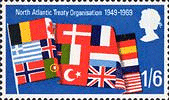 |
 |
||
|
a
|
|||||||
|
28th May
1969
British Architecture, Cathedrals |
 |
 |
 |
 |
 |
 |
|
|
a
|
|||||||
|
1st July
1969
Investiture of HRH The Prince of Wales |
 |
 |
 |
 |
 |
||
|
a
|
|||||||
|
13th August
1969
Gandhi Centenary Year |
 |
||||||
|
a
|
|||||||
|
1st October
1969
Post Office Technology Commemoration |
 |
 |
 |
 |
|||
|
a
|
|||||||
|
26th November
1969
Christmas |
 |
 |
 |
||||
|
|
All
Original Material Copyright SixtiesCity
Other individual owner copyrights may apply to Photographic Images |